The car is fitted with a 1.0-litre engine that produces 50kW and 91Nm. A five-speed manual gearbox sends power to the front wheels. Because the car is aimed at being light on fuel, the engine is a three-cylinder unit that sips around 4.7-litres/100km.
According to the figures put up by the dealer, this Kwid does not have a lot of kilometres under its belt. And at R155 900, the price is a giveaway for something that is still virtually new.
The Kwid can seat up to five adults and boot size ranges between 279 and 620L – the latter when the rear seats are folded flat.
See listing here.
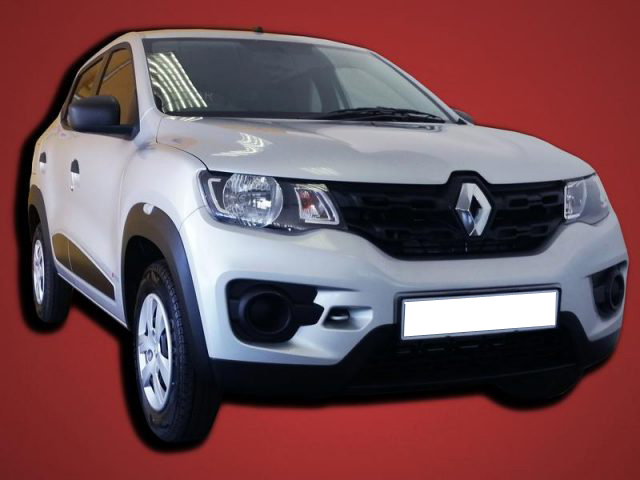
On the other hand, it is pretty rare to find a hatchback that is powered by the rear wheels unless its a custom-made creation. Does a certain rear-wheel-drive Toyota Auris come to mind?
BMW has been perfecting the art of RWD hatch’s for some time with the 1 Series, while Renault also had a go with the uber cool Clio V6.
The idea of a RWD hatch is pretty cool in theory but its not the case from a design and mechanical point of view.
Factors to consider
One of the main reasons why a RWD hatch isn’t feasible is because of space constraints. Taking into account all mechanical intricacies involved, it takes up more interior space than a FWD. When he was still with Top Gear, Jeremy Clarkson did a comparison between the 135i hatchback and the GTI and the 135 didn’t have the space the GTI did.
Everything from centre console to legroom space has to shrink in an already small body. From a performance perspective though it makes complete sense but other than that it is not really beneficial. The VW Golf GTI is front wheel driven but no one can fault its performance.
Leave RWD to sedans
Yes there are other models like the 200SX and Trueno that people also put in the hatch category but they lean more to being coupe sedans. Renault also tried their hand in the RWD hatch arena with the venerable Clio V6 and what a creation it was.
To give an indication that RWD hatchbacks are no longer, BMW is making the latest F20 1 Series a front-wheel-drive. Yes it won’t put power down to the ground in the same way as a RWD would but you have the 3 or 5 Series to do that.
The recipe of FWD hatchbacks is one that works and RWD configurations should be left to the sedans.
]]>It was almost unheard of for your ‘lower spec’ vehicles to be fitted with electric windows and Bluetooth connectivity, but the Sandero had these features. Come 2011 and the range was expanded with the Stepway model; which also over the years was expanded with sub-models.
Earlier this year, Renault South Africa again added a new top model to sit at the top of the Sandero Stepway range. The Plus model, at the time of writing, had an asking price of R218 900 and is powered by a small-but-potent 900cc engine.
F1-inspired engine
Renault is very proud of its involvement in Formula 1 and has gone to great lengths to implement technologies used in the sport on its road cars. In the Sandero’s case, just like with the Kwid and of Renault’s other cars, the engines used in these vehicles have something of F1 in their design.
The Stepway Plus is not exempt from this treatment. The turbocharged three-cylinder motor delivers 66kW and 135Nm. It’s not a lot of power, but power delivery always seems adequate. The full amount of torque is already available at 2 500rpm and is there never really the need to push the motor deep into the red.
What would perhaps have been a boon to the model is either a six-speed manual or Renault’s fantastic six-speed EDC automatic gearbox. The five-speed unit used is not a bad choice, but the additional gear would go a long way in aiding the already-impressive fuel return (we got a little over 6.0 L/100km).
Plus = more?
It’s easy to assume that the ‘Plus’ implies that you’re getting more value for your money, and to a degree you do. The Sandero has always been a value-for-money proposition, but in the higher-spec models a bit more so. In the Stepway Plus’ case, the add-ons are a lot subtler than you might think.
On the exterior, the 16-inch wheels have a nice looking wheel hub that might appear like proper rims, but at closer inspection, they’re plastic wheel caps. Still, these are pretty fine in design and the red-and-black paintwork adds a nice touch to it. Along the front, fog lights have been brought on as standard, as well as a silver lip on the spoiler. At the rear, the bumper is rounded off with a silver diffuser that houses a chrome-tip exhaust. On the front doors, the ‘Plus’ sign has been brought on.
The interior does not see much of an improvement over the rest of the range, but the subtle differences make you realise that you are in a different model. For starters, the seats are decked in cloth (leather is optionally available) with a chequered pattern. ‘Stepway’ is embroidered in the seats, as well. The air vents have a red strip running across each one; just to add a dash of specialness to the package.
Multimedia system
Undoubtedly one of Renault’s greatest attributes has to be the multimedia system used in its budget-beating cars. The system may come across as simple and bland, but the usability and practicality thereof is mighty fine. The system, as used for application in the Stepway Plus, is Bluetooth, AUX, and USB compatible, and features satellite navigation. Drivers have the benefit of controlling some of the system’s features via the controls behind the steering wheel.
The positioning of the USB and AUX ports might not be ideal, especially given that some extension cords are quite short. This results in devices hanging off the cable, or it has to be stored in the air vent just above it. Renault gave this issue attention in the revised Kwid range by positioning the ports much lower down the center console, so it’s fair to assume that the Sandero-range will benefit from this alteration in the near future.
Review: This is the Kwid’s trump card
In summary
The Stepway Plus is a fitting model to sit at the top of Renault’s Sandero-range. In terms of design, it has enough differentiating to make itself stand out, and the cabin sees slight differences to the rest of the range. Buyers looking to buy into something that’ll give them ample of value would not go wrong when considering this vehicle.
It’s not the fastest vehicle in its segment nor is it the best driver’s car, but it’ll get you to where you need to be without missing a beat. And while you’re at it, you can enjoy your favourite music from your favourite device.
]]>The answer, according to Darryl Jacobson, managing director of True Price, is the Creta. “I anticipated this result. In my view, this vehicle ticks all the boxes. When it comes under the hammer, there are always lots of bidders. Dealers especially are happy to pay top dollar, because they know that they will sell it very easily.”
Triumphant Korean
The True Price team attends hundreds of bank repossession auctions each year in order to gather data pertaining to prices paid on auction. This data is used to provide South African motorists with free vehicle evaluations. The data can also be used to provide highly accurate resale values, as Jacobson explains: “Using the data gathered on bank repossession auctions, we are able to generate a statistically valid resale figure. It is expressed as a percentage of the original retail sales price.”
Using this methodology, the Korean emerged triumphant, achieving 78.95% and beating the other three contenders by a fair margin. Jacobson notes: “The Creta is most deserving of its top spot. This stylish and compact SUV is always a firm favourite amongst both private and trade buyers at auctions. It always attracts a great deal of attention and, as the figures show, achieves very good resale values. It’s a very good-looking vehicle that is also comfortable and luxurious. The interior is decidedly premium, the boot is large, and legroom is surprisingly good – even at the back.”
How they fared
The Mazda CX-3 came second, with a resale value of 77.61%.
“Mazda’s baby SUV is great fun to drive, it is extremely well-built, its running costs are low, and it’s well equipped. It also offers a quiet and refined ride.”
Darryl Jacobson, managing director of True Price,.
In third place was the Ford EcoSport, with a resale value of 71.15%.
“Compact, good looking and well-priced, the Ford EcoSport is much loved by both new and used car buyers in South Africa, who appreciate its appealing price tag. Furthermore, this little SUV boasts agile handling with minimal body roll and its infotainment system is very easy to use.”
Darryl Jacobson, managing director of True Price,
The French contender – the Renault Captur – clocked in fourth, with a resale value of 69.82%.
“This is an extremely good-looking vehicle. In fact, it’s the real beauty queen of the bunch. It’s also reliable and safe. But for some reason, it does not attract bidding power.”
Darryl Jacobson, managing director of True Price,
The answer is the Renault Kwid. According to Darryl Jacobson, managing director of True Price, it beats the Datsun Go by a substantial margin. He warns: “This is an extremely important factor to consider prior to signing on the dotted line. It could make a big financial difference when the time comes to sell. One should always consider depreciation before buying a new car.”
The True Price team attends hundreds of bank repossession auctions each year in order to gather data pertaining to prices paid on auction. This data is used to provide South African motorists with free vehicle evaluations. The data can also be used to provide highly accurate resale values, as Jacobson explains: “Using the data gathered on bank repossession auctions, we are able to generate a statistically valid resale figure. It is expressed as a percentage of the original retail sales price.”
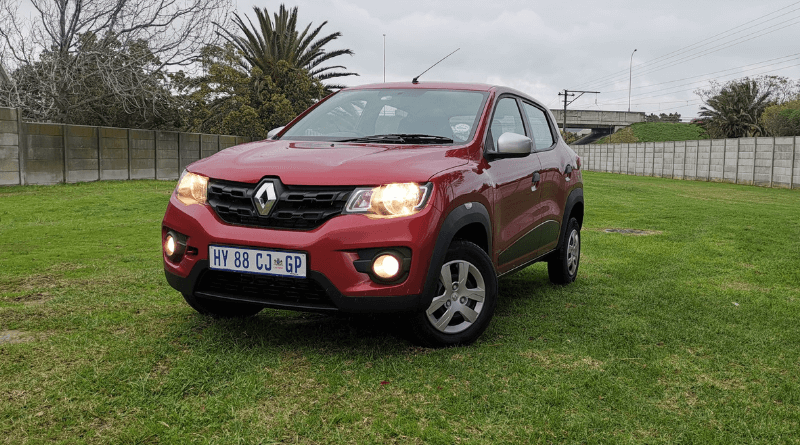
‘Clear winner’
Using this methodology, the Kwid is the clear winner in the resale value stakes. It achieved 76.27%, while the Go got 68.24%.”
The Kwid is also outperforming the Go in the new vehicle sales stakes. It sold 634 units in May and a whopping 1056 in June – versus the Go’s 409 in May and 723 in June.
So, new car buyers prefer the Kwid. But why does it have a better resale value too? According to Jacobson, the Kwid’s good looks are the reason. “It really is a great-looking vehicle. The millennials love it; so do I!” he reveals.
Review: This is the Kwid’s trump card
The Go, on the other hand, isn’t quite the beauty star. Jacobson adds: “Yes, it is a solid package – especially since it gained safety features. Furthermore, it was recently named the most cost-effective vehicle to service or repair in the City Cars and Entry Level category of the 2019 AA Kinsey Report. But it doesn’t appeal to younger buyers quite as strongly as the Kwid. And, even though auction buyers are made up of all ages, there is always more hype and excitement when a Kwid comes under the hammer.”
Having said this, Jacobson says that 68.24% is far from a bad rating: “The Go does beat many other vehicles, but it simply cannot compete with the Kwid!”
]]>The Renault driver is known for his banter and playful personality and is he always in the midst of a prank or a witty comment. But this past weekend he upped his game and gave McLaren-Renault driver, Carlos Sainz Jr., a backhand right between the legs. Yup, square in the testicals!
Sainz, deep involved with an interview, never saw the Australian prankster huddling by and can Ricciardo’s yellow cap be seen at the bottom of the screen. And then FLICK!
Ricciardo releases a swift but violent flick of the hand, throwing the Spaniard off his game.
Oh, it was beautiful! Aah, boys and their banter.
]]>
The TechRoad displays the same DNA and enhanced genetics as the rest of the Duster range with features specific to this particular model:
- Modern exterior styling exuding a robust off-roader look
- Completely redesigned interior
- Smart features to facilitate everyday driving, inclusive of a rear view camera
- Striking 17-inch Diamond Cut wheels with red caps
- Class-leading ground clearance of 210mm
- Impressive fuel consumption from only 4.8 L/100km
The Duster TechRoad derivative [set to replace the Dynamique 4×2 trim level] is available now from only R293 900.
Strong global sales
With more than two million cars sold globally, the Renault Duster has been completely revamped six years after its original release. The new Duster models boast all-new exterior styling delivering an assertive and robust look. The car offers a high-quality, totally redesigned interior for a comfortable and user-friendly cabin experience.
Equipped with new driving aids and new equipment, the Duster is a genuine SUV which is both versatile and comfortable for everyday driving. The Duster has proved to be extremely popular in the South African market with a remarkable 17 000+ units sold to date since its initial launch.
Still tough
The new Renault Duster TechRoad’s robust and particularly assertive styling highlights its SUV pedigree. Visually more muscular, the design tone is set by the more aggressive lines, and a more expressive front and wider rear, heightening the impression of stability. The Duster’s tough stance is emphasized by its bold, more horizontal lines, new 17-inch Diamond Cut wheels, new prominent silver roof rails, and front and rear skid plates that support its adventurer credentials.
The chrome trim of the grille, alongside a raised waistline and the powerful C-shaped light signature complete the powerful stance of the New Duster.
Review: Renault Duster 4×2 improved
The TechRoad’s muscular exterior is enhanced by distinctive bespoke badging and red strips on the side doors, with the new Red Fusion colour bound to be a popular choice. The New Renault Duster now has even greater off-road capabilities evident by the class-leading ground clearance of 210mm, with noteworthy approach and departure angles of 30° high approach and 34° departure angles respectively, deeming it suited for all terrain driving.
The interior of the All-New Renault Duster TechRoad has been completely re-designed, marked by a spacious and passenger friendly cabin. The upholstery features a high-quality finish, with red detailing on the seats and striking red interior finishes. Particular emphasis has been placed on the dashboard as well, presenting strong ergonomic design.
Numerous stowage spaces are easily accessible with improved accessibility of controls, and amongst others, an enhanced Multimedia experience. The New Duster also offers a modular interior layout to easily adapt to needs, with the rear bench seat featuring multiple folding functions, while the boot boasts best-in-class loading capacity of up to 478L.
Diesel engine
The Renault Duster comes with two fuel options and three engine options. There is a choice between the 1.6L 16V and two versions of the proven 1.5 dCi turbo engine. With the Duster 1.5 dCi, driver confidence and comfort are brought to the fore. The Diesel 1.5 dCi 4×2’s engine has outputs of 66kW and 210Nm and consumes from only 5.1 L/100km. The 4×2 EDC and 4×4 Manual versions have outputs of 80kW and 250Nm & 260Nm respectively, with consumption from only 4.8 L/100km.
For greater comfort and pleasure, the six-speed Dual-Clutch EDC Automatic gearbox is now available with the 1.5 dCi Diesel engine. Upshifting is fast and smooth, with no jerking or loss in acceleration, with fuel consumption is comparable to that of the Manual from only 4.8 L/100km.
As is standard across Renault’s entire product range, the Renault Duster Model range comes standard with a five-year/150 000km mechanical warranty and a six-year anti-corrosion warranty. Services take place at 15 000km intervals, and a standard thre-year/45000km service plan applies.
Recommended retail price:
- Renault DUSTER 1.6 Expression 4X2 – R255 900
- Renault DUSTER 1.5 dCi TechRoad 4×2 – R293 900
- Renault DUSTER 1.5 dCi TechRoad EDC 4×2 – R327 900
- Renault DUSTER 1.5 dCi Dynamique 4×4 – R327 900
- Renault DUSTER 1.5dCi Prestige EDC 4×2 – R340 900
Options include:
- Metallic paint – R2 522
- Leather seats – R10 088
The first-generation Duster wasn’t as well-kitted and build quality was a bit iffy, but it was affordable, had no unnecessary tricks and gimmicks, and it wasn’t afraid to take on a gravel road. The revisions brought onto that model didn’t address many of the issues and was it more of a nip and tuck.
But this model is the official second-generation Duster and Renault improved the SUV throughout. Nothing was left untouched and the vehicle is so much better. Over a period of a week we covered more than 3000km in the Duster 1.5 diesel 4×2 and was it a revelation of note getting to know this SUV better.
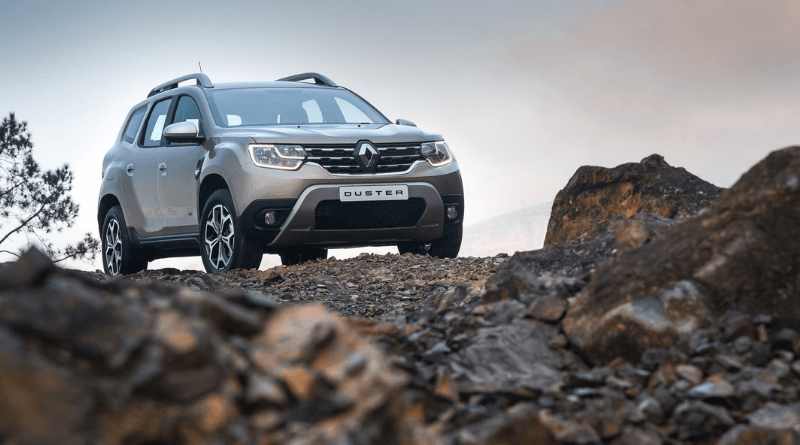
Fresh again
When it comes to new models one of the first things automakers address is a vehicle’s design. And it’s also the case with the Duster. At first glance it looks pretty much the same as the previous model, with little to no changes, but when you look closer you’ll quickly notice the differences.
One of the biggest changes is a new design for the lights. Both the front and rear units are new and do they provide the SUV with a fresh look. The rear lights have a cross in them and upfront the headlights now feature daytime-running LEDs. The bumpers, front and rear, have also been revised to keep the SUV fresh for its next phase.
Changes have brought on inside, too, and do the panels and built-quality look and feel much better. The instrument panel in front of the driver still relays the relevant information to the driver and Renault’s easy-to-use R-Link multimedia system with satellite navigation is added as standard. The seats in this top model is decked in leather, but it’s an optional extra available at R10 000.
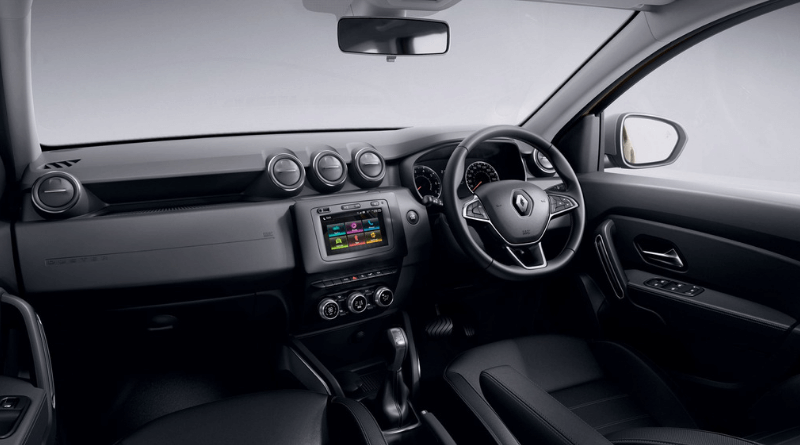
Good consumption
The turbocharged 1.5-litre diesel engine, that’s also used in Mercedes-Benz and Nissan products, delivers 80kW and 250Nm; the latter already available at 1750rpm. It basically means that you have enough power in any gear to move forward.
The -100km/h time takes a leisurely 12 seconds (top speed is 169km/h), but it’s not an issue because you don’t buy the Duster to win sprints. A smooth six-speed automatic gearbox sends power to the front wheels.
Believe it or not, but at the end of our more than 3000km test the Duster 4×2’s average consumption was a mere 5.8 L/100km; which means that you can cover 860km when the 50L fuel tank is filled to the brim. No matter what, this engine is the Duster’s biggest asset.
Read: Road trip! Going south in Renault’s new Koleos
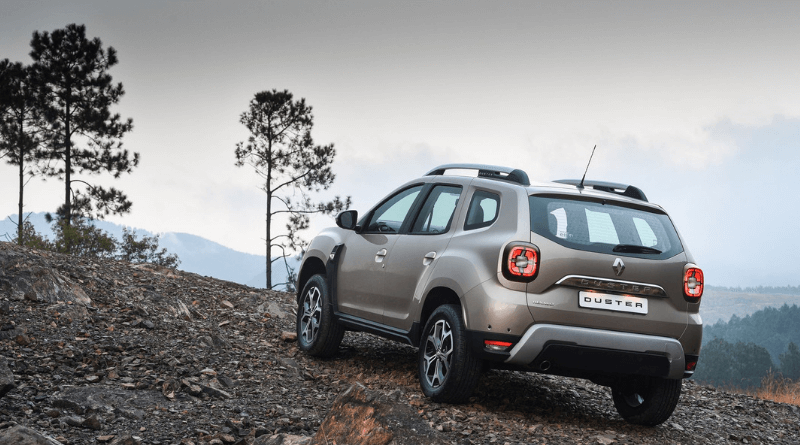
Who I am
Renault knows that buyers turn to the Duster because it’s frill-free. You buy this vehicle to cater to your active lifestyle and don’t want to feel guilty when you trek over gravel roads. It’s one of those vehicles that has a clear purpose in the market and is not bothered with winning any beauty pageants.
In the period of a week the Duster was exposed to roads that included both tar and gravel. From Cape Town to Wupperthal deep in the Cedar Mountains, up the West Coast… the Duster never grew tired and driving it never tired the driver. Especially on the mountain roads, where dongas and hellish road conditions are the norm, the Duster excelled and proved its metal against the elements. And the ground clearance of 210mm sure did come in handy.
Summary
The Renault Duster is no doubt one of the most fun vehicles on the market. Yes, we know that a Renault does not have very good resale value and that build quality sometimes leaves much to be desired, but the Duster is what it is.
It’s an almost perfect leisure vehicle that can take you anywhere – just don’t go with the 4×2 where you’d go with the 4×4. It’s an ideal companion for your trip with family and friends and you don’t have to be too bothered with fuel consumption too much.
Since its launch in South Africa in 2013 the Duster has been nothing but a success for Renault and is there no reason why the revised Duster range, led by this 1.5 diesel Prestige, won’t continue that favouritism.
Price: R340 900
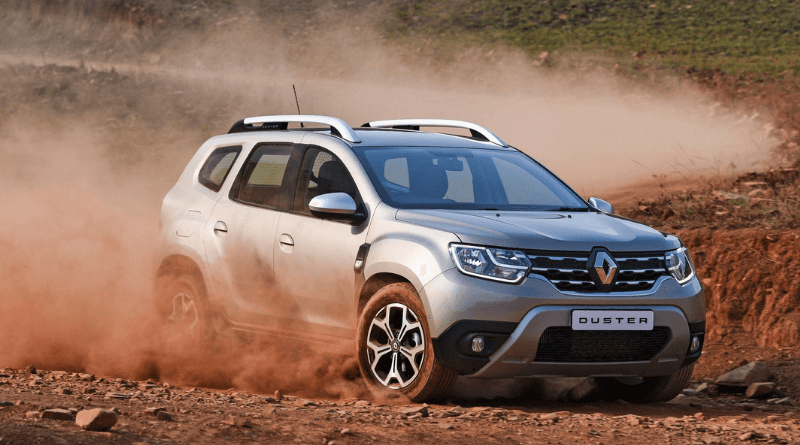
Launched earlier in 2019, the Koleos name returns to South Africa and does the big SUV replace the Kadjar in the Renault range. In its blue hue the Koleos looks ready for the open road and was all that’s needed to get our baggage in the boot. Unfortunately for most men, when you travel with the fairer sex you’re bound to have extra luggage that could’ve stayed home. And being outnumbered three-to-two, the ladies made the boot theirs.
Their luggage was so overwhelming, in fact, that the boot cover had to stay home. All 464L of boot space got taken up and some luggage had to be squeezed in-between the rear passengers’ feet. It’s a mindboggling thing traveling with women. Whether going for one night or two (or more), they believe in bringing the entire cupboard.
But we got going and began the journey outbound over Sir Lowry’s Pass on the N2.
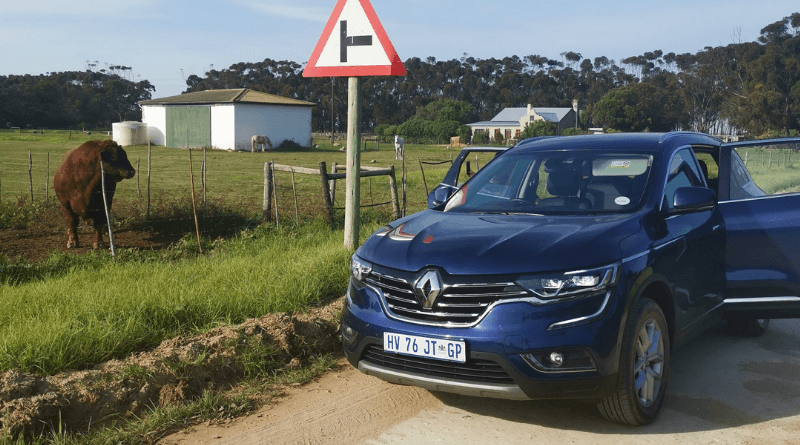
Play some funky music!
A lekker road trip is nothing without good music and in the nights leading up to the Groot Trek, various genres were scoured for the perfect road trip music. Funny enough, we never got round to listening to 3/4 of the music, because when push came to shove the music was in no one’s taste. Fortunately, in an attempt to stave off any heightened tension thanks to the compact arrangements for the rear passengers, we settled on gospel music because God is love.
At one point four of the passengers had their phones connected and was it a stress-free exercise to switch between devices. Tired of the one phone’s music? Easy, just change to device and let it rip. Music to loud? I don’t mind turning it down from behind the steering wheel.
The touchscreen from which to control the media is nice and big and is it easy to read the instructions and lettering. However, it is a bit slow to the touch and does it not really react as fast as I would like to my commands. The menus, too, are just too overwhelming at times and does it take an unnecessary amount of time to find your desired choice.
It’s not a confusing system, just so we’re clear, but one would’ve liked the system to be as simple and as intuitive as possible. Renault’s R-Link system is known for being one of the simplest yet highly effective media systems in the automotive world, but the one in the Koleos tries a bit too hard.
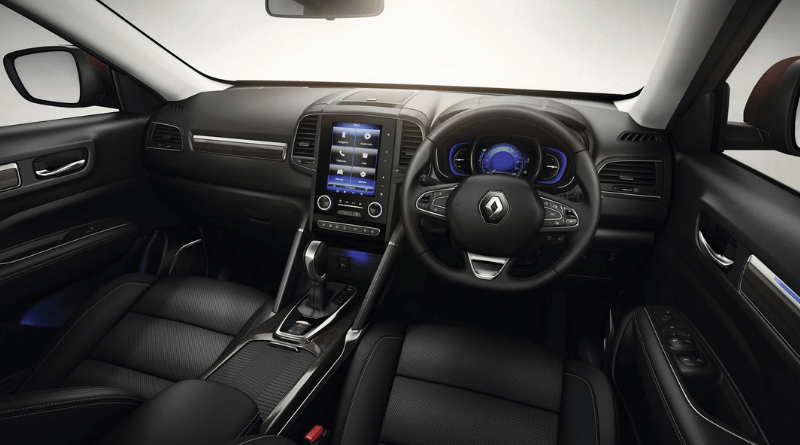
In the sandpit
We arrived in Suiderstrand – a few kilometres down the road from Cape L’Agulhas – that very evening and no time was wasted to get the fire going. It was a bit of a tiring drive, given how dead straight the road is, but the next day’s adventure is sure to be an epic one.
Morning comes and we take our seats in the Koleos; driving out of the estate at leisurely pace. We’re only a few steps from the ocean, so the sea breeze is still very fresh around us. That and the sharp smell of the little bushes we’re driving through. Some sneeze as we’re driving on, while others sneeze out the other side because of last night’s steak. Regardless, we passed Cape L’Agulhas and Struisbaai and headed towards Bredasdorp before turning onto a gravel road that’ll take us to Arniston.
It’s not a bad gravel road this, but the rain the last couple of days had formed some gaping holes in the ground. Still, we could manage a comfortable 100km/h. The front wheels provided adequate grip and drive, but this vehicle is four-wheel drive and of course I’d want to explore that function. The 4WD system has two modes: auto and lock. In auto, the vehicle will default into front-wheel drive, but when slip is detected it’ll channel power to the rear wheels. Lock puts the vehicle in full 4WD.
With the dial flicked into auto, the Koleos immediately behaved differently. On the information cluster in front of me I could see how the power is channelled between the axles and was there greater sturdiness at 100km/h.
In Arnsiton, we made our way to the caves in Waenhuiskrans, but to get there is a bit of a walk. Knowing that I have a 4WD vehicle, I engaged 4WD Lock and proceeded to scale some (very!) uneven terrain. Ground clearance is a respectable 210mm, meaning that a slow and steady pace will see you overcome some of life’s hardest challenges. A big bed of sand laid waiting before the caves and, just to be naughty, I disengaged 4WD and drove towards and into the sand. Slowly, because I wanted to deliberately get stuck. Calmly I engaged 4WD auto again and the Koleos’ traction kicked in and out we went.
The Koleos 4WD is not meant to tackle arduous and heinous obstacles, but it’s a reassuring thought to know that you can get out of most troubles. Would I go bundu-bashing with it? Nope! But I’ll definitely take the road less traveled.
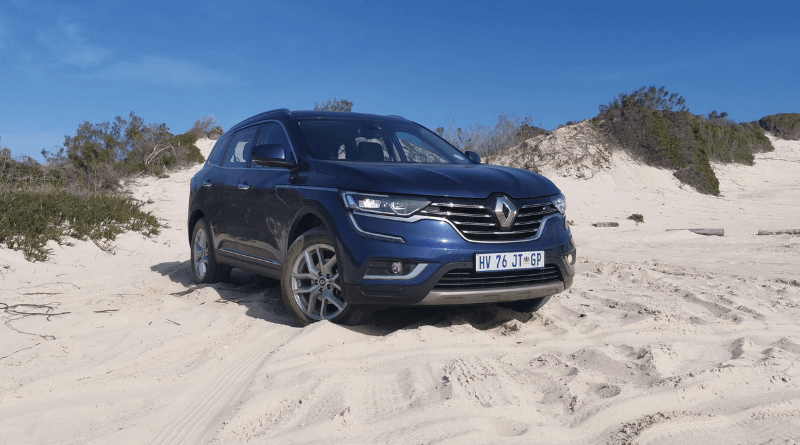
Coming back
It’s been a good couple of days in the Overberg region and unfortunately the time has come to pack up and head back to the city. The ocean had a revitalising effect on all of us and our little wooden cabin will be sorely missed. The Koleos packed and everyone in, we exit the estate for the last time.
We’re taking another bit of a detour back to Cape Town via Gansbaai, Stanford, Hermanus and Caledon. It’s a longer route, but more scenic. (*sigh) As fate would have it, all four of my passengers fell asleep and was it only me and my thoughts on the Koleos for most of the drive back.
Thanks to its size the Koleos has no trouble transporting five adults and their luggage (some with extra luggage). There’s ample of space for everyone and the levels of comfort, regardless of road condition, is always on point. Even from behind the wheel you don’t get tired of driving this big SUV. What did come up, though, was how much strain the engine was under. 126kW and 233Nm from its naturally-aspirated 2.5-litre engine is not much, and the CVT gearbox does little to enhance performance. Performing an overtake or building momentum to scale a hill is met with that irritating squeal CVTs are so famously known for.
This has a definite and negative effect on fuel consumption. Average fuel usage was just under 10 L/100km and it was discouraging seeing the fuel needle drop after barely setting off. On a full, 60L tank of petrol I simply could not make 400km; regardless of load. Renault desperately wants to bring a diesel model to SA, but they’re running the risk of the model being too expensive. I say: just do it.
The Koleos is Renault’s top SUV, ready to tackle the open road at a moment’s notice. If something could just be done with that engine/gearbox combination, the SUV would no doubt find favour among a larger group of the population.
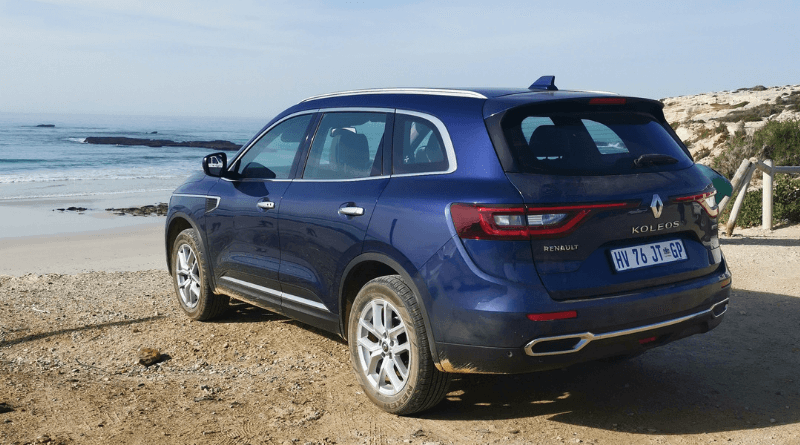
April sees a further development to the Renault Kwid range with the introduction of ABS across all the Kwid derivatives, i.e. the Kwid Expression and Dynamique manual, Dynamique AMT, and Climber models. Together with the integration of smartphone mirroring i.e. Apple Car Play & Android Auto from the Dynamique models upwards, which will no doubt increase the Kwid’s appeal.
Good technology
The Kwid offers an interior which includes a user-friendly multimedia system, complete with a first-in-class large 7” (18cm) touchscreen colour display, encased in its piano black centre console with chrome surround (Dynamique only). The Multimedia system comes with a range of functions such as Bluetooth audio streaming and hands-free telephony, USB & AUX-input ports, speed sensing volume control, and has now been upgraded to incorporate smartphone mirroring with Apple Car Play and Android Auto compatibility.
The Renault Kwid now also offers seatbelt warning functionality, alerting consumers to buckle up through a consistent flashing light and an escalating alert tone, as a safety precaution.
The Kwid can still carry five passengers comfortably and the front seats are height adjustable, while the electric power steering and one-touch lane change indicator add to the drive. The driver’s seat is four-way adjustable. Electric front windows add to driver and front passenger convenience, boot space is a generous 300L.
1.0-litre engine
The compact 1.0-litre three-cylinder Smart Control efficiency (SCe) engine powering the Kwid models has been optimised and pushes out peak power of 50kW and maximum torque of 91Nm @ 4250rpm. Paired to a five-speed manual gearbox, Renault says the Kwid will deliver a fuel return of 4.7 L/100 km and 4.4 L/100km with the AMT transmission.
As is standard across Renault’s entire product range, the Renault Kwid range comes standard with a five-year/150 000km mechanical warranty and a six-year anti-corrosion warranty, plus a two-year service plan, with services scheduled at 15 000km intervals. The Kwid model range still offers the value-add of one year’s Comprehensive Insurance Cover, to further promote peace-of-mind driving.
Price:
- Renault Kwid Expression 1.0-litre SCe – R134 900
- Renault Kwid Dynamique 1.0-litre SCe – R144 900
- Renault Kwid Dynamique AMT 1.0-litre SCe – R154 900
- Renault Kwid Climber 1.0-litre SCe – R154 900
Metallic paint is optionally available at R2522.